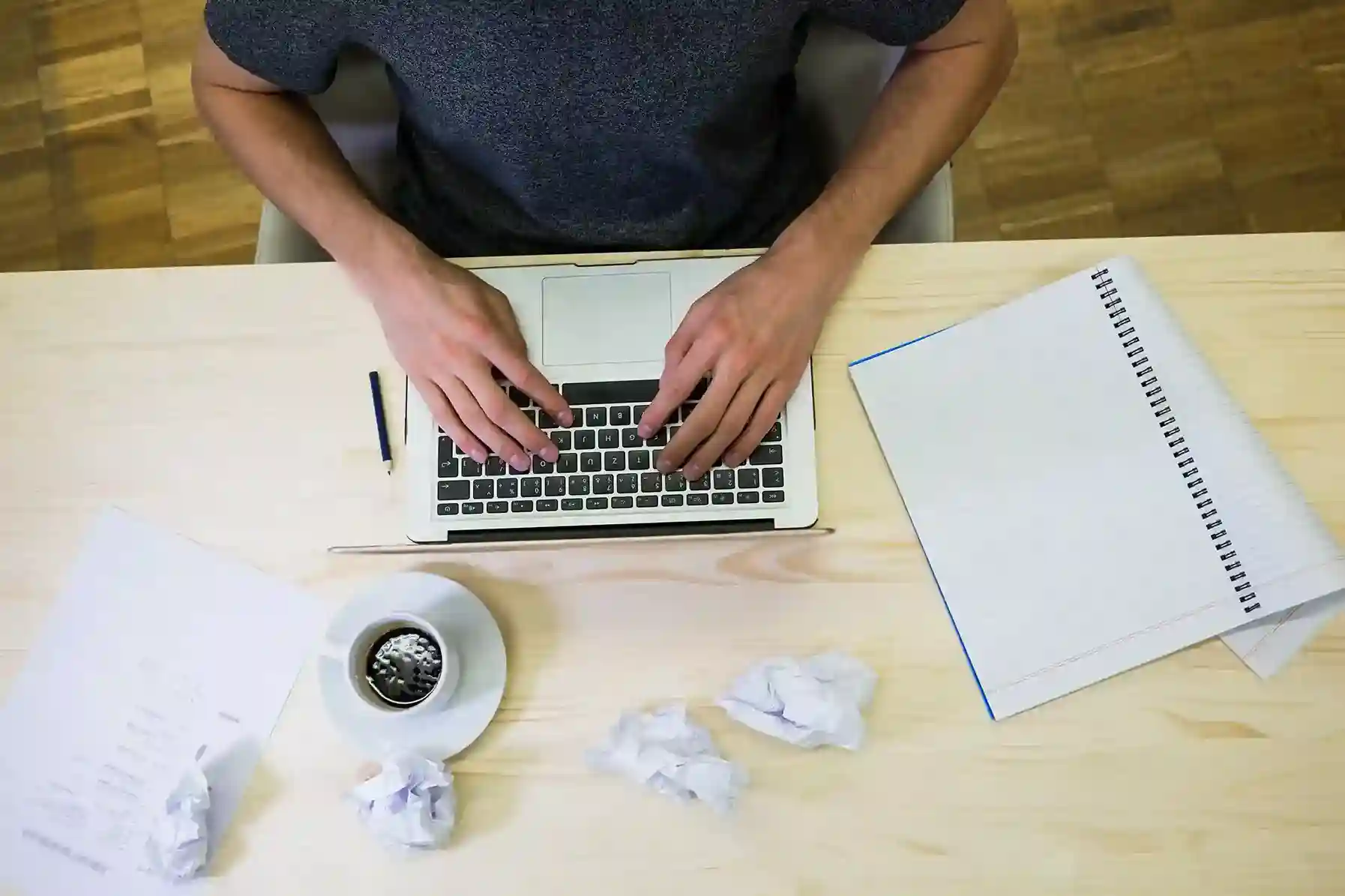Typing fast doesn’t always equate to typing accurately, and I learned this the hard way during my first job when I would aggressively type away, thinking I was in the zone. Later, I would realize that I had to fix countless spelling, punctuation, and capitalization errors – correcting these grammatical mistakes was tedious and wastes so much time.
Fortunately, there are ways to help you type fast and accurately simultaneously by understanding why we make mistakes in the first place. Even though we know how words are spelled, which punctuations to use, and the basic rules of grammar, we still struggle to avoid typing errors without proper focus, self-training, and the right tools.
Why Typing Errors Happen
When Your Eyes Keep Wandering Down
I remember when I first started typing on a computer. My teacher told me to stop looking at the keyboard, but I couldn’t help myself. Every few seconds, I found myself glancing down to find the right keys. This habit made me bound to make time-wasting errors along the way.
When you keep your eyes on the keyboard while you type, your brain gets confused. You lose track of what you’re writing on the screen. This split attention creates a perfect recipe for mistakes. Your fingers might hit the wrong keys because you’re not watching where your words appear.
Your Fingers Don’t Know Their Home
Incorrect finger positioning on the keyboard is like trying to drive a car without knowing where the steering wheel is. Each of your fingers should know their correct positions on the keyboard. But if you haven’t mastered the letter locations, your hands will wander around like lost tourists.
Think of your keyboard as a neighborhood. Each finger has its own house and street to live on. When your positioning isn’t aligned properly, it’s like your fingers are visiting the wrong houses. This incorrect finger placement leads to typing mistakes that happen over and over again.
When Your Brain Goes on Vacation
Distractions are the biggest enemy of good typing. Typing mistakes are inevitable when your mind drifts; staying focused and syncing your thoughts with your fingers is key to accuracy.
I once tried to type an important email while watching TV. Whatever I thought I was writing turned into a mess of random words. My brain couldn’t handle both tasks at the same time. This taught me that focused typing needs a quiet mind.
The Speed Trap That Catches Everyone
Even skilled touch typists can slip up when they hurry through their work. Constantly working under time pressure often leads to frequent typing mistakes. They get so focused on finishing fast that they forget about being careful.
Rushing and focusing on speed is like driving too fast on a bumpy road. You might reach your destination quicker, but you’ll hit every pothole along the way. Good typing needs a steady pace, not a wild race.
The False Friend in Your Computer
Relying too much on spell check apps creates a dangerous habit. Relying on spelling and grammar checkers can make you careless with your writing, as you begin to assume the tool will correct all your mistakes automatically.
Unfortunately, many spell-checking software programs are not as thorough as you might think. This often leads to overlooked typos and, in the end, careless work. These apps are helpers, not replacements for careful typing. They can’t understand the difference between “their” and “there” in every situation.

Smart Strategies to Stop Making Typing Mistakes
Typing errors can be prevented with the right approach and smart work habits. After years of helping students and professionals improve their writing, I’ve seen how these simple tips have helped many people get a better handle on typing errors. The secret lies in changing your mindset and using the right productivity tools that actually work.
Start With Accuracy First, Speed Comes Later
Here’s something I learned the hard way during my early writing days – rushing never pays off. You need to condition yourself to type accurately first; the speed will come later naturally. Think of it like learning to ride a bike – you master balance before you worry about going fast.
Repetition will eventually train your brain and your hands to strike the correct keys without thinking. It’s much better to be accurate now so you can continue typing with ease than to waste time later by going back to your text later and correcting spelling mistakes. I’ve watched countless writers get frustrated because they focus on typing speed instead of getting it right the first time.
Build Strong Hand and Brain Connection
Muscle memory comes from doing the same manual tasks repeatedly, so it pays to practice – and to do so the right way. You can avoid typing errors in the future by mastering the home row position on your keyboard.
Place your left fingers on the A, S, D, and F keys and the right fingers on the J, K, L, and semicolon keys. This optimal position allows you to access all tiles on your keyboard without having to lift your entire hand off the base. During my teaching experience, students who master this basic alphabet test position see dramatic improvements in their accuracy.
Perfect Your Sitting Setup
Maintaining the correct sitting posture can significantly improve both your typing speed and accuracy. Not sure what that looks like? Here’s a helpful checklist to guide you. Keep your back straight and sit with your feet firmly flat on the ground.
Your elbows should form a 90-degree angle to minimize strain and enhance control. Position your monitor so the top of the screen is at eye level and at least 45 cm away from your eyes.
It’s fine to let your wrists rest lightly on the desk in front of the keyboard—just avoid placing your full weight on them. This small change has allowed me to type comfortably for long periods without any strain.
Also Read This Blog: How to Avoid Wrist Pain from Excessive Typing
Create Your Focus Zone
Distractions can keep you away from getting quality typing done, so find a spot where you can freely work without being distracted by other people, sights, or events. If you are unable to find a conducive work location, try plugging noise-cancelling earphones in – and maybe playing some classical music in the background – this can help you focus better.
I discovered that even small changes in my environment made a huge difference in my typing accuracy. Keyword shortcuts become second nature when you’re not constantly interrupted.
Choose Smart Software Tools
Plenty of productivity and typing tools claim to boost your efficiency, but juggling too many at once can actually distract you from the task at hand. Real-time text prediction software helps streamline your workflow by combining essential features in one place, eliminating the need to constantly switch between apps. The goal is to choose tools that complement each other and support your focus, not disrupt it.
Conclusion
Typing errors don’t have to hold back your writing when you use the right tools and ways to improve. With consistent self-training and focus on basic grammar rules, you can type fast while avoiding mistakes that waste time.
Fortunately, our Type the Alphabet Game helps you practice accurately. Stop aggressively rushing through your work only to realize later that you need to fix grammatical errors and capitalization problems. Take your typing skills to the next level and equate better practice with writing that truly wows – because correcting tedious errors in the wrong place becomes unnecessary when you master these techniques simultaneously.


